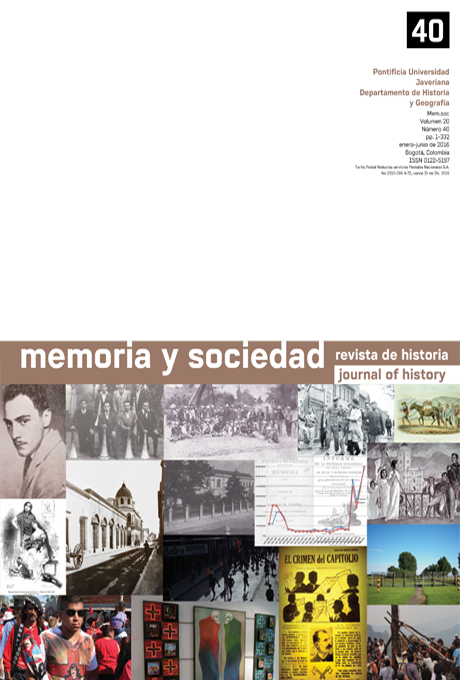Abstract
I present and analyze in this work the presentations
of the internal armed conflict (1980-
2000) that struck the communities of the
Peruvian south-central sierra with particular
strength and violence. Said conflict is framed
in a long history of discrimination and
racism, which has characterized the relationship
between the State and Quechua-speaking
citizens. This experience is vital to understand
the form and content acquired by the
memories of the conflict that these communities
have, as well as the artefacts that comprise
the exhibition of the memory museums. Based
on an ethnographic field work, I will focus
on analyzing and setting in context the objects
found in the exhibition of the museum «So
It Does not Happen Again » of the National
Group of Kidnapped, Imprisoned, and Missing
Relatives of Peru (anfasep) of Ayacucho.
The journal Memoria y Sociedad is registered under a Creative Commons Attribution 4.0 International Public License. Thus, this work may be reproduced, distributed, and publicly shared in digital format, as long as the names of the authors and Pontificia Universidad Javeriana are acknowledged. Others are allowed to quote, adapt, transform, auto-archive, republish, and create based on this material, for any purpose (even commercial ones), provided the authorship is duly acknowledged, a link to the original work is provided, and it is specified if changes have been made. Pontificia Universidad Javeriana does not hold the rights of published works and the authors are solely responsible for the contents of their works; they keep the moral, intellectual, privacy, and publicity rights.
Approving the intervention of the work (review, copy-editing, translation, layout) and the following outreach, are granted through an use license and not through an assignment of rights. This means the journal and Pontificia Universidad Javeriana cannot be held responsible for any ethical malpractice by the authors. As a consequence of the protection granted by the use license, the journal is not required to publish recantations or modify information already published, unless the errata stems from the editorial management process. Publishing contents in this journal does not generate royalties for contributors.

